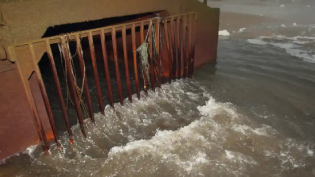Prioritisation of Sewer Overflows in Scotland
What are Unsatisfactory Combined Sewer Overflows?
There are a number of possible reasons that a combined sewer overflow (CSO) can be considered Unsatisfactory.
Discharges via CSOs can be unsatisfactory due to:
- Operation causing water quality impacts
- Operation during dry weather
- Operation causing aesthetic (sewage related debris) impact
- Failure to meet licence conditions
Prioritisation of Unsatisfactory CSOs
Studies have been undertaken to prioritise unsatisfactory sewer overflows for phased improvement as follows and summarised in the table below.
High Priority
An Unsatisfactory CSO is High Priority if it:
- spills in dry weather; and/or
- causes or significantly contributes to failures in water quality standards, as identified in the River Basin Management Plan; and/or
- has very significant quantities of sewage litter observed during ground surveys (>1000 items); and/or
- a number of environmental complaints/incidents have been recorded (3 or more) and the presence of sewage litter has been confirmed.
Improving Urban Waters High Priority Assets
Download this document to view 108 high priority assets that have been identified through study and subsequently prioritised for improvement.
Download hereMedium Priority
An Unsatisfactory CSOs is Medium Priority if some sewage litter is observed during ground surveys (<1000 items) and multiple, verified environmental complaints/incidents have been recorded.
Low Priority
Some sewage litter is observed during ground surveys (<1000 items) but no environmental complaints/incidents have been verified.
The majority of studies have been completed and any unsatisfactory sewer overflows prioritised. It is expected that there will always be a small amount of study work ongoing.
Satisfactory design
Note that sewer overflows can be considered to be ‘Satisfactory’ in their design but can still occasionally cause pollution due to blockages elsewhere in the sewer network. These blockages can be caused by inappropriate customer products being disposed of to the sewer, sewer blockage, collapse or sediment build-up. For information about what not to flush down the toilet, check out our Nature Calls campaign here.
Table 1 – Summary of prioritisation criteria
|
Criteria |
Ground survey (items of litter observed) |
Verified complaints or incidents |
Indicative Timescale |
|||
|
|
>1000 |
1-1000 |
1-2 |
>3 |
Identify solutions |
Deliver solutions |
|
Causing water quality impacts |
High |
High |
High |
High |
2024 |
2027* |
|
Spills in dry weather |
High |
High |
High |
High |
2024 |
2031* |
|
Sewage related debris |
High |
|
|
High |
2024 |
2031* |
|
|
|
Medium (both criteria met) |
|
2027* |
2031* |
|
*Timescales are subject to Scottish Water investment prioritisation and planning







